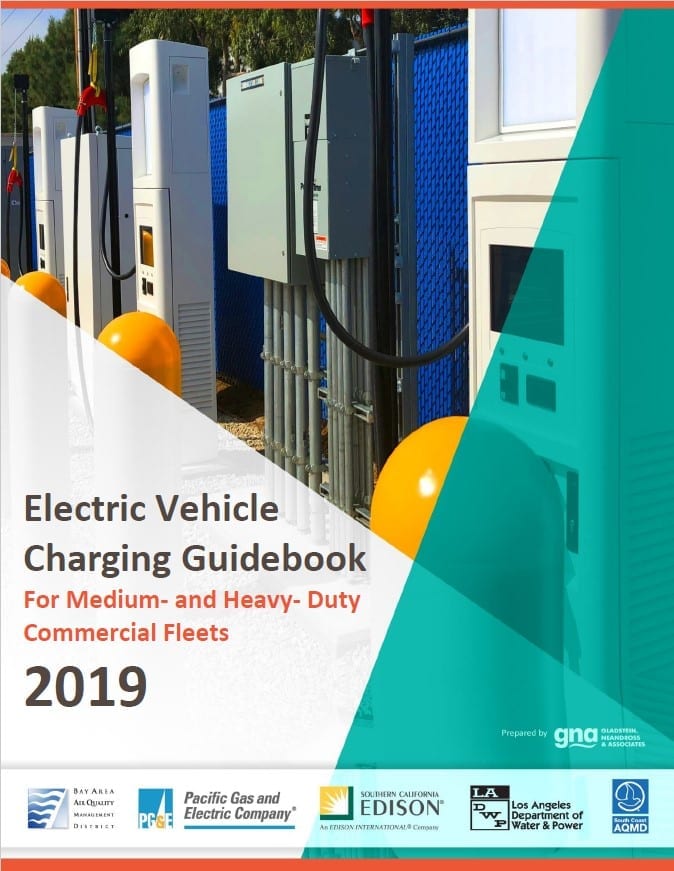As the 2020 model year kicks off, manufacturers are putting their first battery electric vehicles (BEVs) into the hands of fleet customers, leading the industry into a new discovery stage with zero emission technology. Central to these early deployments is the question of how to charge BEVs in commercial operations.
A Growing Market Segment—But Customer Questions Remain
Earlier this year, global leaders Daimler and Penske celebrated an industry milestone by deploying the first of 20 American-made heavy-duty BEV trucks in service on California roads. In 2021, over 30 models from 15 manufacturers are expected to be available in Classes 4-8. Buying these vehicles is a growing customer base of fleets interested in the cost savings that can be achieved when paired with federal and state incentives, and motivated to meet tightening environmental regulations. While fleets are experts in their trade, transitioning to BEVs entails learning a dizzying array of terms, concepts, and tradeoffs that are new to most fleets.
A Valuable Industry Resource for Fleet Managers
Having worked with a broad range of stakeholders in the electric vehicle space for years, including leading fleets, global OEMs, technology developers, and utilities; Gladstein, Neandross & Associates (GNA) recognized a real need for an accessible, 101-level, educational resource covering the on-the-ground implications of electrification, tailored specifically to the fleet executive. Fleets often, and understandably, struggle with planning for lengthy, multi-step implementation timelines, navigating utility rate structures and permitting, implementing cost-effective charging strategies, and understanding the complexities of electricity pricing. Many times, these challenges are rooted in a lack of information about the key aspects of EV charging.
Fleets often, and understandably, struggle with planning for lengthy, multi-step implementation timelines, navigating utility rate structures and permitting, and understanding the complexities of electricity pricing.
To address this growing market need, GNA engaged a core set of stakeholders shaping the commercial BEV space and captured their combined expertise in a new, freely available resource designed to support fleet managers in assessing their own, fleet-specific BEV opportunity. The Electric Vehicle Charging Guidebook for Medium- and Heavy- Duty Commercial Fleets (“EV Charging Guidebook”) equips fleet managers with key tools to start the development of a fleet charging program using accessible terms, easy-to-read infographics, exercises, reference tables, and a summary of program funding resources.
Addressing a New and Complex Approach to Fleet Management
The differences between electricity and conventional liquid fuels greatly affect the day-to-day practice of managing a commercial vehicle fleet. Recognizing that fleet managers must understand both the operational requirements and investment horizon of the technologies they manage, the EV Charging Guidebook describes electricity production, procurement, and delivery as it relates to vehicle deployments in everyday terms, at an introductory level.
From this foundation, fleet managers are subsequently guided through the exercise of developing the on-site fleet charging station and schedule that meets their operational requirements and projecting the cost and time to install a charging station. Using narrative, infographics, reference tables and example scenarios, these sections prepare a fleet manager for the array of variables they should consider when developing a charging program. The final section advises on best maintenance practices and directs the reader to a summary of funding resources for charging equipment.
The EV Charging Guidebook equips fleet managers with the tools and knowledge needed to estimate their fleet’s baseline energy needs and charging requirements; identify the charging equipment that meets their needs; develop charging station configurations that work with their existing space; discuss details of electric service and electricity pricing with local utilities; and find funding opportunities to reduce project costs. Written from a manufacturer- and fleet- agnostic perspective, the EV Charging Guidebook is a strong foundational resource for any fleet operating in California or beyond.
Developed with Fleet Managers in Mind
The EV Charging Guidebook is a free resource developed in collaboration with utility and air district sponsors at the forefront of supporting commercial BEV implementation—Bay Area Air Quality Management District; South Coast Air Quality Management District; Los Angeles Department of Water and Power; Pacific Gas and Electric; and Southern California Edison.
Developed with utility- and air district- specific guidance and resources to provide fleets with the most up-to-date information on their requirements and programs.
The EV Charging Guidebook was developed with utility- and air district- specific guidance and resources to provide fleets in these utility territories and jurisdictions with the most up-to-date information on their requirements and programs. While the sponsors adapted the guidebook to reflect their unique offerings and resources, the EV Charging Guidebook is applicable to any fleet manager interested in deploying commercial BEVs.
Take full advantage of this resource by downloading your copy of the EV Charging Guidebook today at: learn.gladstein.org/evguidebook


